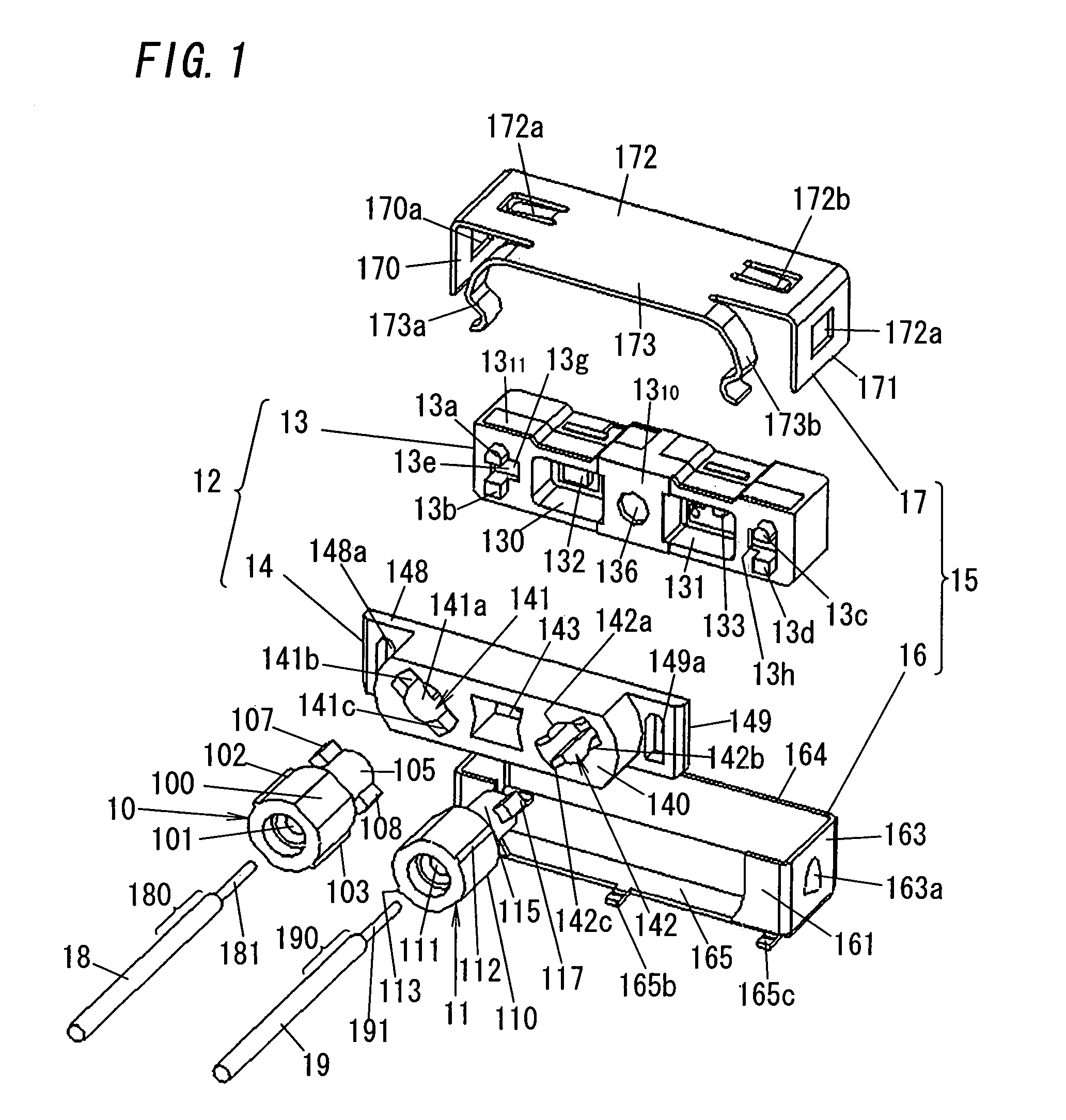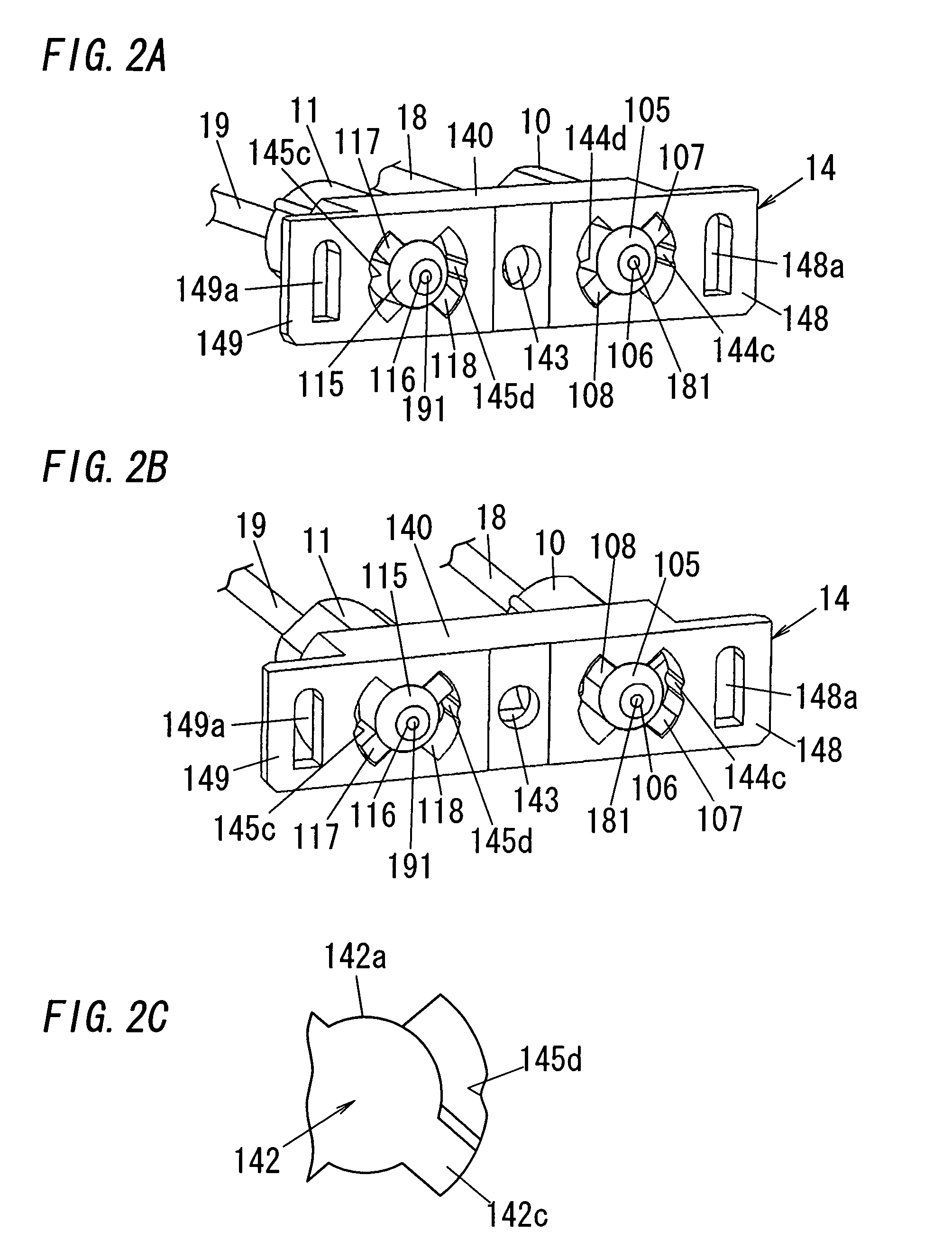Plug-socket connector apparatus for optical fiber termination
a technology of plug-socket connectors and connectors, which is applied in the direction of optics, optical elements, instruments, etc., can solve the problems of inability to use optical communication with external devices, inability to place print circuit boards side by side in a horizontal direction, and large thickness dimension of electronic products equipped with plug-socket connectors, so as to improve the working efficiency of connection
- Summary
- Abstract
- Description
- Claims
- Application Information
AI Technical Summary
Benefits of technology
Problems solved by technology
Method used
Image
Examples
Embodiment Construction
[0047]FIG. 1 shows plug-socket connector apparatus for optical fiber termination, in accordance with an embodiment of the present invention. This apparatus comprises first and second plugs 10 and 11, a socket 12, and a metal shell 15.
[0048]The first and second plugs 10 and 11 are fixed at one ends 180 and 190 of first and second optical fiber cables 18 and 19 enclosing first and second optical fibers 181 and 191, respectively. The plugs 10 and 11 are both single ferrule plugs and comprise first and second plug-bases 100 and 110 and first and second circular plug-tips 105 and 115, respectively. Each of the plugs 10 and 11 is also made of conductive material (e.g., conductive synthetic resin).
[0049]The first and second plug-bases 100 and 110 have first and second holes 101 and 111 into which the ends 180 and 190 of the cables 18 and 19 are inserted, respectively, and fixes the ends 180 and 190 inserted into the holes 101 and 111, respectively. For example, the ends 180 and 190 are res...
PUM
 Login to View More
Login to View More Abstract
Description
Claims
Application Information
 Login to View More
Login to View More - R&D
- Intellectual Property
- Life Sciences
- Materials
- Tech Scout
- Unparalleled Data Quality
- Higher Quality Content
- 60% Fewer Hallucinations
Browse by: Latest US Patents, China's latest patents, Technical Efficacy Thesaurus, Application Domain, Technology Topic, Popular Technical Reports.
© 2025 PatSnap. All rights reserved.Legal|Privacy policy|Modern Slavery Act Transparency Statement|Sitemap|About US| Contact US: help@patsnap.com



